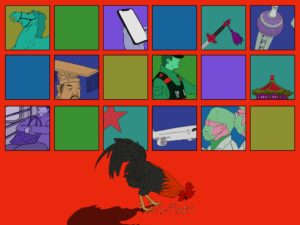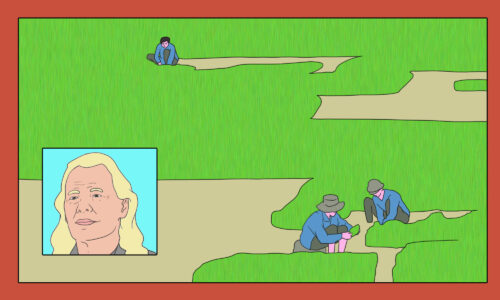China’s poverty-shaming social assistance system and the urgent need for reform
China boasts the largest social assistance system in the world by number of beneficiaries. In theory, this guarantees a basic standard of living for all citizens. Yet invasive income- and asset-testing measures and flawed implementation mean that many eligible citizens never receive full support, and those who do are often left stigmatized and isolated.

While COVID-19 continues to stifle China’s economy, with unemployment sitting at a record 6.2%, Western media attention has concentrated on which monetary levers the country’s central bank is likely to pull, what sort of infrastructure stimulus central authorities are likely to favor, and the tactics that local governments are harnessing to incentivize factory bosses to keep staff on the books.
Far less attention has been paid to China’s welfare response, a fact that should be surprising given it is those in already economically tenuous positions who stand to be most affected by COVID-19 and its economic ramifications. In addition, 2020 was meant to be the year that Xí Jìnpíng 习近平 would oversee an end to China’s absolute poverty.
The coronavirus has prompted renewed conversations about the potential merits of universal basic income (UBI) and unconditional cash transfer programs, but China already has a targeted basic income assistance program that aims to provide a “minimum” standard of living to those with low or no income, known colloquially as the dibao. According to Xinhua, a recent Politburo meeting chaired by Xi even stressed the need to “improve social security, do a good job administering the dibao, promptly issue temporary subsidies, and guarantee a basic standard of living for the people.”
Research, however, has found that the dibao scheme has failed to reduce China’s poverty rate by any substantial margin, and in the era of coronavirus, it is in urgent need of reform.
What is the dibao?
First introduced in Shanghai in 1993, the dībǎo 低保 — short for 最低生活保障 zuìdī shēnghuó bǎozhàng, or “minimum livelihood guarantee” — was created to ensure a basic living standard for urban Shanghainese who lost their jobs in the transition from a planned to a market-based economy. While the dibao was rolled out across the rest of urban China in 1999, it wasn’t until 2007 that rural Chinese citizens were granted access to the program.
Although the dibao is a central government policy, local governments are responsible for carrying it out and for setting the “dibao line” based on how much money is needed to cover basic living costs in their area. Successful applicants then receive the difference between their income, often including informal income from family and friends, and the dibao line. As an unconditional cash transfer program, recipients have discretion over how they then use the money.
While the dibao is by no means the only thread in the fabric of China’s social safety net, it is considered China’s main social assistance program, as it opens the window to further benefits, and, at least in theory, ensures a basic standard of living for society’s most vulnerable.
A “limited” impact on poverty reduction
Unfortunately, when it comes to the dibao’s actual impact on poverty alleviation, numerous studies have revealed its performance to be less than stellar.
In her comprehensive assessment of the dibao, Qin Gao, a professor of social work at Columbia University, found that the dibao has had a “limited and at best modest” impact on reducing China’s poverty rate. This is largely the result of “leakage” and “mistargeting”:
- Gao and her team found that in 2007, 42% of eligible urban families were not receiving the dibao, while another study estimated that a mere 11% of eligible rural residents were dibao recipients in 2009.
- More surprisingly, Gao and her colleagues estimated that 76% of 2007 urban dibao recipients were actually ineligible. A separate study found that an incredible 86% of 2009 rural dibao recipients did not actually meet the program requirements.
- While the high leakage and mistargeting rate is in large part due to poor administrative practices, it is an open secret that corruption also plays a key role.
- Dorothy Solinger, a professor of political science at the University of California, Irvine, has noted that in addition to dishonest recipients, local officials have also been found to dip into funds themselves or siphon off dibao money for “favorites” within the community. Solinger points to one such case where a Wuhan welfare official was found to have falsely claimed 500,000 yuan ($70,420) in dibao payments and used them to boost his employees’ wages and revamp the office.
While the dibao may have only had a marginal impact on reducing China’s poverty rate, Gao did find that the dibao is more effective when it comes to reducing the “depth and severity” of poverty among its recipients. Most notably, the dibao enabled urban dibao recipients to spend significantly more on healthcare and education than their non-recipient peers. An increase in healthcare expenditure was also observable among rural recipients.
Yet multiple studies have also concluded that many dibao recipients aren’t receiving their full cash entitlements, and that the dibao lines set by many localities are often inadequate. For instance, rural migrant workers are only entitled to receive the dibao from their place of origin, where dibao lines are based off of local living costs and are far lower than the urban areas where migrants ultimately live and search for work. A 2006 study even found that more than 80% of urban recipients felt their income was insufficient.
Despair, humiliation, and isolation
While the dibao is plagued by leakage and mistargeting errors, it has also been noted that these errors are hardly unique to China. What does set the dibao apart, however, is the brutal intrusiveness of its means-testing measures that leave an overwhelming proportion of recipients with a deep sense of shame and isolation.
While there may be some regional variation, Solinger explains that, in general, after a potential recipient files a written dibao application, local community officials visit and search the applicant’s house and, if relevant, their place of work to verify the claims made in their application. Officials proceed to interview neighbors and workmates to ensure the potential dibao recipient is being truthful, disclosing the applicant’s personal information in the process. After the initial interrogation of neighbors and co-workers, potential recipients’ names are then often printed and published on bulletin boards within the community. The wider community can then provide officials with feedback as to how deserving each applicant is. This process of public filtering and community scrutiny continues until the list is whittled down to those with no objections from fellow residents, who are then finally approved to receive the dibao.
Unsurprisingly, Gao observes that almost all recipients when interviewed mention how “stigma affects their lives and express their shame and despair” as a result of their dibao status and the “forced disclosure of their privacy.” One 2012 study cited by Gao reported an interviewee’s humiliation at having to publicly disclose that she was suffering from a gynecological disease that prevented her from working, while another deliberately hid the family’s dibao status from their child to prevent him from having to carry a “psychological burden.” Consequently, many potential recipients forgo even applying for the dibao in the first place.
Because of the strict means-testing requirements and the constant monitoring of one’s lifestyle by others in the community, including ongoing inspections every three to six months, dibao recipients are often effectively prevented from investing in supposedly frivolous things, such as cell phones, computers, and education that would bolster their chances of moving into regular paid employment. Many recipients are further prevented from finding paid work (or from caring for relatives) by requirements that they undertake “voluntary mandatory work.” Solinger has described such requirements — in conjunction with the inadequacy of dibao payments — as effectively consigning recipients to a “permanent underclass,” while Gao and her colleagues found that the fear of snitching neighbors and losing one’s dibao eligibility has meant that many recipients are notably more socially isolated than non-recipient peers in otherwise similar situations, spending less money on leisure activities and more time at home out of public view. One 2015 study even found that compared with those eligible but not receiving the dibao, dibao recipients were at an increased likelihood, by an incredible 128%, of feeling unhappy.
Reform: The need for system overhaul
Broadening the program’s reach through better administration and increased resources, upping benefit amounts across the country, and ensuring applicants receive the full entitlements are perhaps the most obvious first points of reform.
As Gao asserts, few similar cash transfer programs have been known to “adopt a screening procedure that involves as extensive public scrutiny and humiliation” as the dibao. While Gao notes this is partially due to long-standing traditions of community engagement and the general “disregard for individual and family privacy” since 1949, it also reflects China’s lack of systems that effectively monitor income and tax. Improving information system management to lessen the supposed need for such intrusive screening practices, and taking active steps to destigmatize and change the public conversation around the dibao (and poverty more broadly), will likely reduce the barriers to applying for the dibao and improve recipient well-being.
But as Gao has observed, the experiences of dibao recipients also point to the need for wider overhaul of China’s welfare and social benefits systems. The fact that many dibao recipients prioritize spending on healthcare and education over food and utilities points to the dire shortage of accessible healthcare and education for low-income families. Gao recommends upping medical and education benefits so that dibao payments can be used for food, clothing, and shelter as intended, while public services should be expanded so that unemployed urbanites and rural residents have the same access to healthcare and social insurance as their employed urban peers.
The experiences of dibao recipients also offer important lessons about the potential of basic income programs as a tool of poverty alleviation. Counter to long-standing fears and assumptions, research has found that rural dibao recipients experienced a reduction in their spending on items such as alcohol and cigarettes (similar statistics don’t appear to be available for urban recipients). As a result, Gao notes, low-income households “deserve more trust and credit for making the best decisions possible” for themselves and families. These findings should also inform policymakers when they set benefit amounts and encourage wider trialing of UBI-type programs in the Chinese context.
While the precarious financial situations of many local governments and demographic challenges pose significant barriers to a wider system overhaul, in the time of the coronavirus and increased unemployment, such reforms are more pressing and necessary than ever. As central authorities show an increased willingness to tolerate greater public debt as part of their COVID-19 response, and acknowledge the role that social assistance stands to play in boosting consumption, one has reason to hope authorities will opt to invest additional funding in an improved welfare system that provides people with more than the bare “minimum.”





